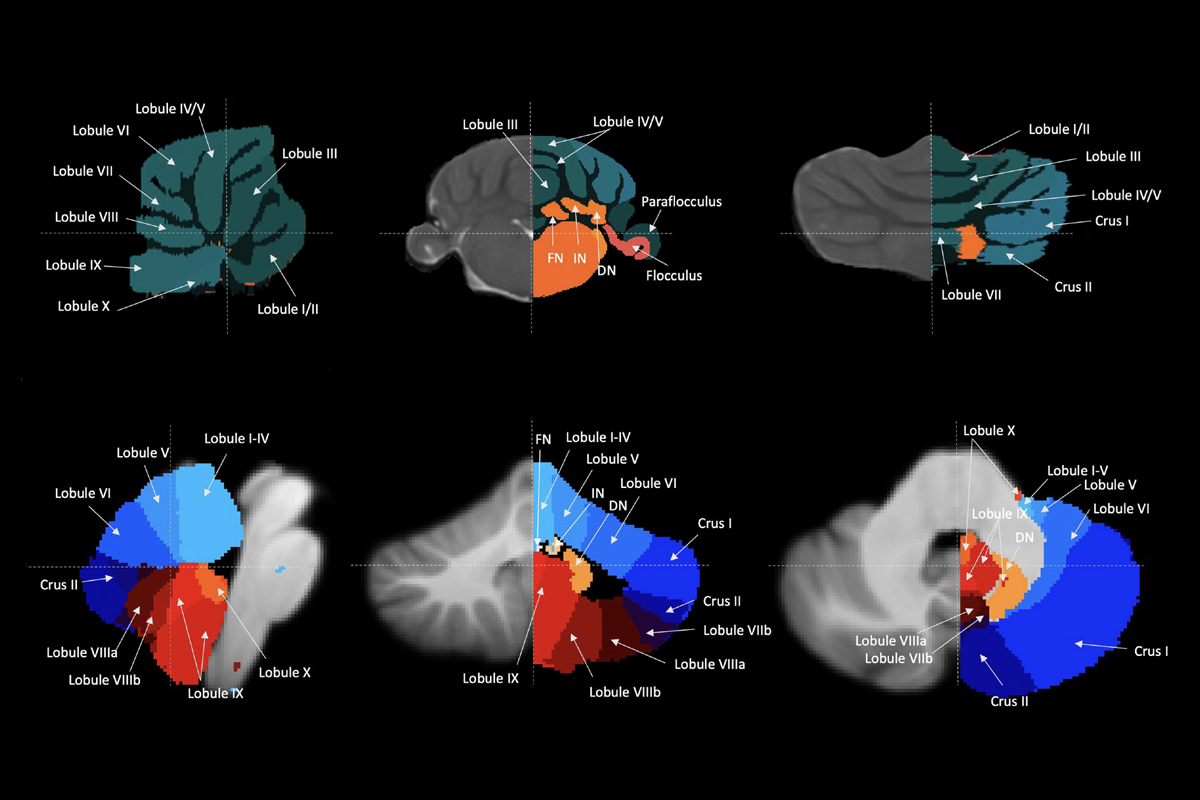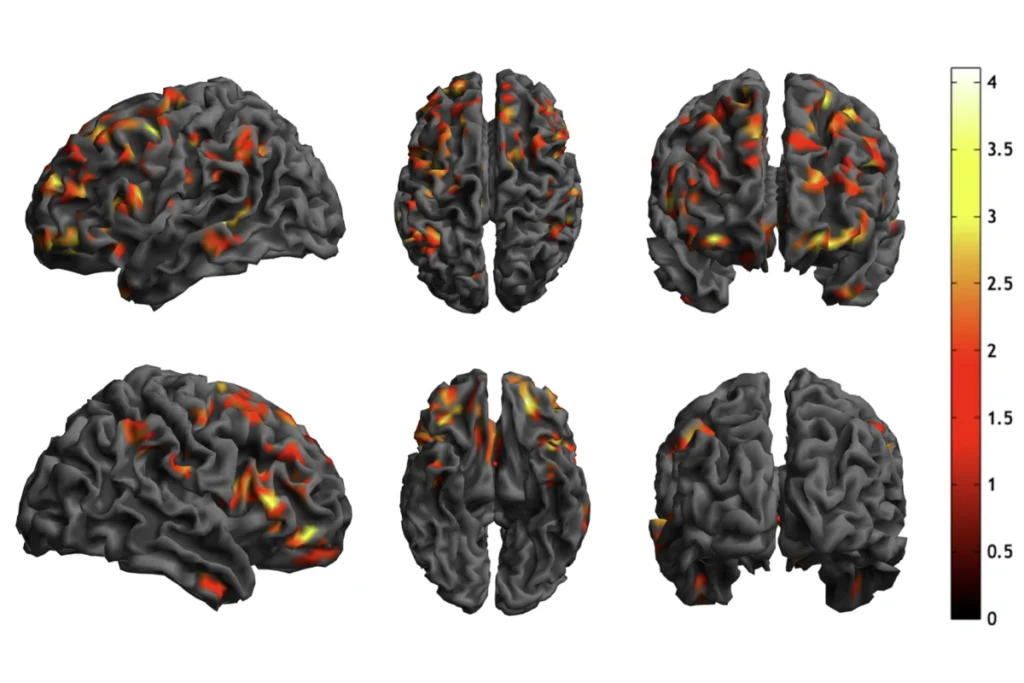- Autistic people show similar neural responses, as measured with electroencephalography, to images of their own faces and closely matched faces, whereas non-autistic people respond differently to the two. Cortex
- Brain imaging reveals differences in cortical anatomy between people with autism and those with attention-deficit/hyperactivity disorder, according to a preprint. medRxiv
- Cerebellar circuits that are known to play roles in autism mediate emotional responses to threatening stimuli, according to a review. Frontiers in Systems Neuroscience
Cerebellar circuits; facial recognition; cortical anatomy
Here is a roundup of autism-related news and research spotted around the web for the week of 25 December.
By
Jill Adams
26 December 2023 | 1 min read

Danger signals: The cerebellum, shown here for rats (top row) and humans (bottom row), plays a role in fear responses and may also contribute to emotional processing in autism.
- Many autistic people have slightly greater physiological reactions to social stimuli, which may be mediated by a smaller parasympathetic nervous system response, according to a review. Autism Research
- Hospitalized children with autism are more likely to be restrained for violent or self-injurious behavior than are non-autistic children. Pediatrics
Recommended reading

Okur-Chung neurodevelopmental syndrome; excess CSF; autistic girls
By
Jill Adams
22 October 2024 | 2 min read

New catalog charts familial ties from autism to 90 other conditions
By
Charles Q. Choi
17 October 2024 | 4 min read
Explore more from The Transmitter

Karen Adolph explains how we develop our ability to move through the world
By
Paul Middlebrooks
25 October 2024 | 89 min listen

Microglia’s pruning function called into question
By
RJ Mackenzie
24 October 2024 | 9 min read

Early trajectory of Alzheimer’s tracked in single-cell brain atlases
By
Angie Voyles Askham
23 October 2024 | 8 min read
Cite this article:
